Protecting Brands in Australia
It is essential for existing and prospective online retailers to determine the legal requirements for brand ownership and protection in the online environment.
In the domestic Australian context the most important considerations are:
Intellectual property- Intellectual Property (IP) is the general name for property generated through creation, innovation, discovery, or improvement. It does not have to exist in a tangible, physical form. IP protection gives the current owner exclusive privileges in specific territories over specified periods of time. In relation to Brand this may include the following types of protection.
Trademarks- any part of the brand that is protected by law as it is exclusively owned and controlled by an owner.
Often the value of a brand and a product lies in the owner’s ability to control who can use or sell a branded product or service.
Patents- if any aspect of the brand involves an invention, then the inventor or applicant can secure a contract with a government agency for national or international protection of certain monopoly rights for a limited period.
Designs- the outward shape or decorative appearance of brands and associated products can be protected by a design. In the online context design protection relates solely to aesthetics, not functionality.
Copyright- legal protection for the author or owner to protect consistent use and particularly who can reproduce, publish, transmit and sell materials: physical, verbal and visual. In an online context this may include coverage of rights to text, design and artistic works, sound recordings, interactive films (including videos), broadcasts and streaming programs, and applications programming.
Domain Name and Brand Name Protection
When moving online one of the first major hurdles any retailer hits is the registration of a domain name. Some immediate questions emerge:
- Should the domain name be the same as the brand name for the company or sub-brands?
- Is the domain name the same as the trademark and subject to legal coverage under copyright and intellectual property (IP) provisions?
If brand management and legal issues are not already bedded down, the difference between trademarks, business brands, manufacturer’s brands and the domain name, will accentuate not only legal issues and brand strategies, but also customer perceptions.
To register a brand name in Australia, the applicant must be registered under the Federal Corporations Law administered by the Australian Securities and Investments Commission. Any variations to the registered business name in the domain name must be accommodated by the business first registering a trading or business name.
By insisting that a business be registered first, all the Intellectual Property issues of rights to a name and alignment of domains to existing businesses are addressed. It also confirms the sectors or areas of business operation and locations (state, national or international) where the brand name will apply. While subject to international covenants and legal review, an individual in Australia cannot register a domain name as a trademark unless it is the same as a legally defined and protected entity or has an existing trademark as defined in the Trade Marks Act 1995, that is, a business name or trademarked brand name.
Registering a domain name does not suggest trademark and IP protection is also automatically in place. Registration of the domain name is simply confirmation of ownership of a virtual address for the business on the Internet.
Brands and Trade Practices
Brand ownership and protection online also involves consideration of how business is conducted. As brands involve values and customer perceptions, online trading practices can directly impact the brand. Issues of privacy and data security impact how customers shop online.
The Australian Guidelines for Ecommerce give details of good trade practices and can be sourced at:
http://www.treasury.gov.au/contentitem.asp?NavId=014&ContentID=1083

The final issue in online business practices that can directly impact a brand is the issue of privacy. Online traders must comply with the Federal Privacy Act 1988.
Refer to http://www.privacy.gov.au/ACT/privacyact/
This Act specifically protects the privacy of Australian citizens. In 2000, amendments were made to the Act to specifically cover internet and data issues arising out of new technologies. The amendments saw the addition of ten National Privacy Principles (NPP) that covered:
- Collection
- Use and disclosure
- Data quality
- Data security
- Openness
- Access and correction
- Identifiers
- Anonymity
- Trans-border data flows
- Sensitive information
In effect, since 2000 the Australian customer owns their personal data. Others cannot use this data or disclose it without express permission. Traders on the Internet from other countries must also comply with these provisions or be in breach of Australian law.
Legalisation for Specific Branded Products
There are laws that apply to specific types of product, and these will vary across different jurisdictions. You need to seek expert advice on the current legal requirements relating to your particular product. Some of the legislation that may apply includes:
- Tobacco Laws
- Liquor Laws
- Lottery Legislation
- Industry codes of practice
- Sale of second-hand goods
- Sale of X- and R-rated products
- Customs, import and export regulations
Protecting Brands Globally
The Internet changes the scope of legal issues impacting the protection of brands. Many traders have never had to consider retailing into other countries or trading in a channel that spans multiple national jurisdictions.
In the international context the most important considerations are:
Responding to Online Brand Damage
A company with a good reputation also needs an online brand management campaign, so that its reputation remains intact and never tarnished. As the Web continues to become a more dynamic and vital part of every corporation, today’s enterprises need to become more proactive at anticipating exploits and abuses that can tarnish their reputation and negatively impact their business operations by consolidating their Internet domain names and putting in place a series of protective measures.
The following are a number of protective measures:
- Make managing and monitoring your company’s online reputation part of your marketing plan
- Identify who will be your advisors, for seeking counsel before reacting to a crisis
- Engage your key offline/online stakeholders needing information during a crisis
- Develop a crisis-blog ready for deployment
- Select who is on your crisis team
- Determine your media spokesperson
- Develop your Online Risk Management Strategy, Policy and Procedure
Reputation Management
Search engine reputation management is the focused effort to insure that the result listings of the search engines reflect the benefits that your company provides, rather than any malicious attempts to discredit or lower consumer confidence.
Brand protection is another key component of online reputation management. There may be times where the reputation of a company can be damaged by information about the particular product, service or brand or even the leadership of the company.
Looking to learn the art of effective Customer Experiences? The ARA Retail Institute provides leading accredited training options including workshops and masterclasses in Revaluing the Total Customer Experience. Have a look at our class below:
{{cta(‘f7438aea-c70f-44eb-bd60-ee6dbbdd669c’,’justifyleft’)}}





















